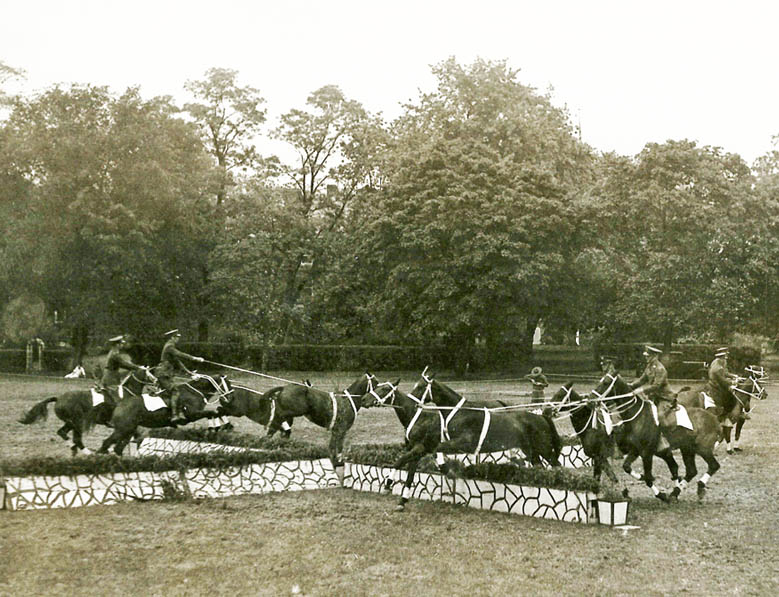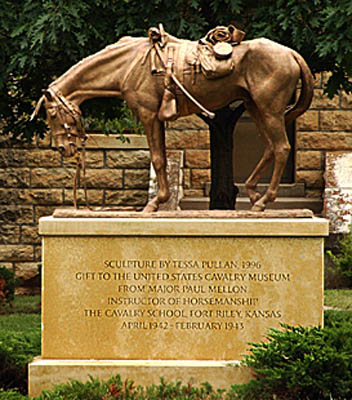The Paradox of the War Horse: Introduction

|

|
Of all animals that might be of use in warfare you would think that the horse would be the least. They are nervous and flighty herbivorous prey animals who really are afraid of their own shadows. Once I had the experience of riding on a bright winter day across snow covered ground. My horse’s shadow stood out in bold contrast to the white ground. The entire ride my horse was nervously eying his own shadow and speeding up trying to get away from it. It is almost impossible to think that such an animal as this would go on a battlefield and yet the testimony of history tells us otherwise. So, how is it possible? The answer is a complicated one with a number of elements. Domestic horses are very trainable and will become accustomed to almost any environment with repeat exposure. Secondly, they are herd animals and are reassured when among a group of other horses which was usually the case on a battlefield.
Finally, there is a behavior in stallions of challenging predators. Although my horse is a gelding, he retains and often exhibits this behavior. For example, if I walk out of the woods and surprise him and his mares in the pasture, he will raise his head straight up in the air and advance toward me with an extended high stepping trot. In the wild this behavior is a signal to a predator. It lets the predator know that it has been spotted and that its attack is unlikely to succeed. The hoped for result is that the predator will break off the attack and that the herd can avoid consuming the energy used up in taking flight. Once my horse gets close enough I get this “Oh, it’s only you” look of recognition, and he returns to his pasture mates. So, a behavior of confronting danger is also hard-wired into horses. On another occasion we were riding in the woods and two unattended barking dogs advanced on us aggressively. The horses started to turn to run but my wife and I turned them toward the dogs and urged them into a canter directly toward our attackers. The dogs suddenly stopped barking, turned tail and ran for all they were worth. I could sense my horse’s enthusiasm for the chase. He enjoyed turning the tables on the dogs. We had no intention of catching up with them, and they never bothered us again once they escaped into the brush.

|
In prior times most people lived in agricultural communities and were no strangers to domestic animals. Their attitude was that in the natural order of things humans were the superiors of animals and that the reason for animals to exist was to serve their masters. A sentimental attachment to an animal would be viewed as odd, undesirable, and maybe even as unmanly. However, in the mounted branches of the army the men were assigned horses to care for, and the needs of the horses came first. Soldiers first saw to their mounts' needs: food, water, and grooming, and only afterward were they allowed to eat their own meals. It should be no surprise if in time they would develop a certain attachment to their horses born out of a common experience. During the American Civil War, Artilleryman John D. Billings says the following of the horses serving in his unit:
“But, aside from their wonderful heroism,---for I can find no better name for it,---they exhibited in many ways that sagacity for which the animal is famous. I have already referred to the readiness with which they responded to many of the bugle-calls used on drill. In the cavalry service they knew their places as well as did the riders, and it was a frequent occurrence to see a horse, when his rider had been dismounted by some means, resume his place in line or column without him, seemingly not wishing to be left behind.”
From Hardtack and Coffee p. 328
War is never kind to the humans or the animals caught up in it. However, it is impossible to consider the history of horse and man without considering the impact that mounted warfare had on both human civilization and on the nature of riding today. For example, the various dressage movements were originally designed for use on the battlefield. Various horse breeds were originally developed as cavalry mounts. Ex-military riders schooled many generations of civilian sport and competitive riders. As animal lovers we can be thankful that horses are excused from modern battlefields, but the heritage of the war horse is one that we cannot escape.